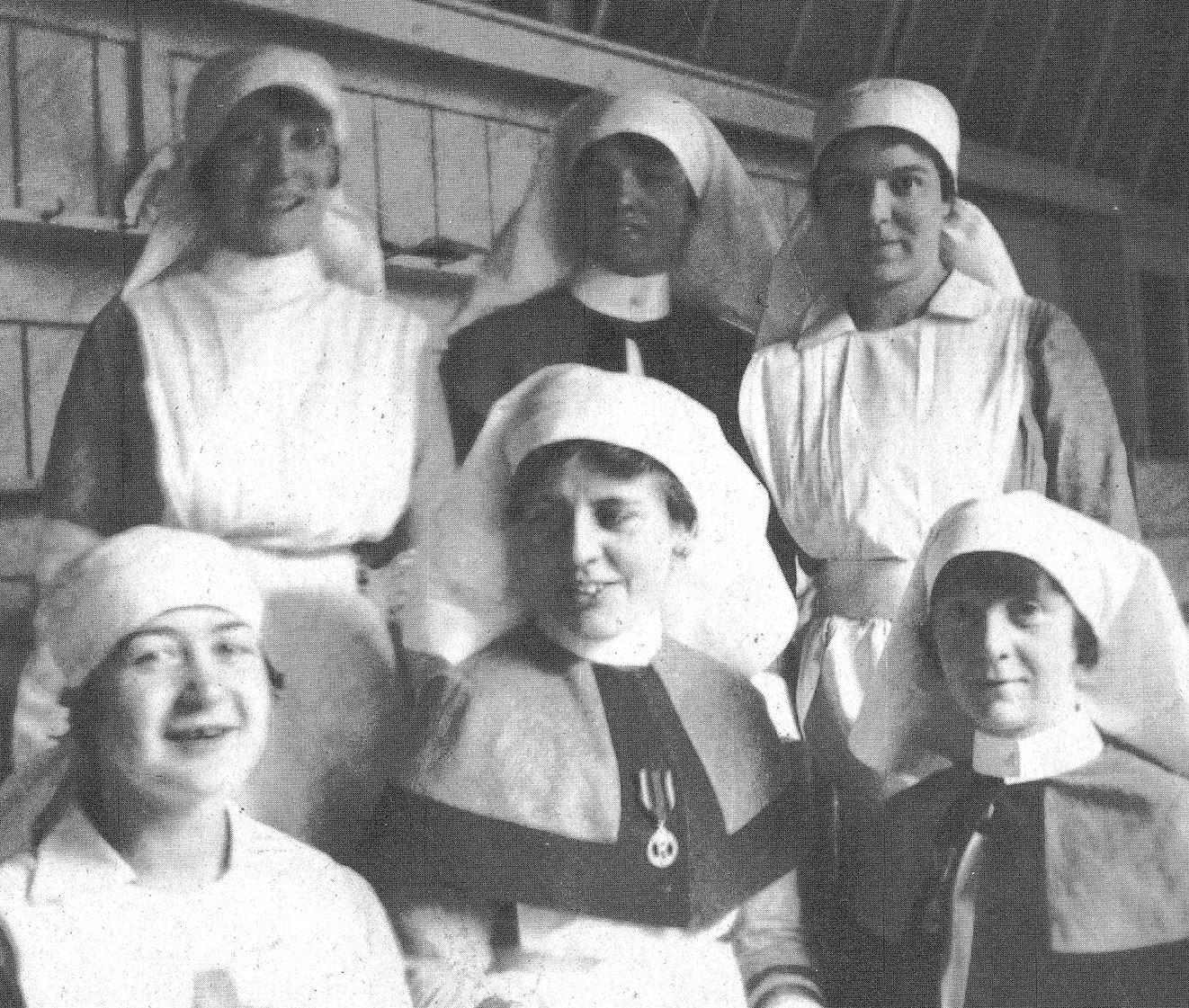When the United Kingdom, Canada and Newfoundland entered the First World War, millions of men and women answered the call of duty. St. John Ambulance was no exception: many members joined the armed forces, but many served in a St. John Ambulance uniform in Canada and overseas.
In 1913, the St. John Ambulance Brigade consisted of 24 Ambulance Divisions and three Nursing Divisions, with five Ambulance and one Nursing Division in Toronto.1
At the start of the war, the organization known today as St. John Ambulance was, in fact, two organizations – the St. John Ambulance Association and the St. John Ambulance Brigade. However, the war changed this as distinctions blurred and society concentrated on its collective objective of winning the war. Old differences were put aside internally and externally, leading to the close working relationship between St. John Ambulance and the Canadian branch of the British Red Cross Society (Canadian Red Cross).2
St John Ambulance provided first aid training to over 200,000 members of the Canadian Expeditionary Force (CEF) and trained every medic and stretcher-bearer of the Newfoundland Regiment.3
Before the war, many members of the Brigade were also military personnel, with a good number serving in what would become the Canadian Army Medical Corps.
One of St. John Ambulance’s most significant contributions to the war effort was the formation of the Voluntary Aid Detachments (VADs), which served in both Canada and overseas.
Other wartime activities undertaken by St. John Ambulance included the collection of non-medical goods for the CEF4 and relief work after the Halifax Explosion of 1917.
Voluntary Aid Detachments (VADs)
In 1911, before the outbreak of World War I, the Militia Council proposed the creation of Voluntary Medical Aid, which was subsequently approved in March 1914. Nine Voluntary Aid committees were planned, one for each of the nine Militia districts, with members coming from both St. John Ambulance and the Red Cross.5
The VADs served as nurses’ assistants or as one of the four following groups:
- Nursing members – women aged 21 – 48 who held first aid and nursing certificates
- Functional trainers – women aged 21 – 50 who held nursing certificates and had attended three months of military training at Hart House in Toronto – they went on to serve in Britain and France
- Special services section – women aged 22 – 38 who had undergone six months of training at Hart House – they went on to provide physiotherapy services in military hospitals in Canada
- General service section – women aged 18 – 50 who performed non-medial logistics roles6
The first VADs were set up in Halifax and Quebec City to help transport returning wounded soldiers. Members of the Toronto Nursing Division helped set up two convalescent hospitals – the Euclid Convalescent Hospital and another one on College Street.7
From 1916 onwards, St. John Ambulance Canada sent 67 VADs overseas, and by the end of the war, over 45,000 members served in VADs throughout the British Empire.8 In addition to the 360 volunteers sent by St. John Ambulance Canada to overseas postings, many more paid their own way across the Atlantic and applied directly to VADs in the UK.9
First Aid Instruction
Early in World War I, the military set a goal of providing first aid training to as many members of the Canadian Expeditionary Force (CEF) as possible. Members of the St. John Ambulance Association and the St. John Ambulance Brigade were appointed to each unit and paid as Senior Non-Commissioned Officers (Sergeants and Colour/Staff Sergeants) for a set period of time to allow them to teach first aid to every man in the unit. Members of St. John Ambulance were also appointed as Quartermaster Sergeants in the Canadian Army Medical Corps.10
Cooperation with the Red Cross
At the outset of the war, St. John Ambulance and the Red Cross formed a Joint Committee to minimize duplication in work. Both organizations shared two important persons: the Governor General, HRH the Duke of Connaught (a younger son of Queen Victoria and uncle of King George V), was a patron of both, while George Ryerson had started both the Canadian branches of St. John Ambulance and the Red Cross. Ryerson remained involved throughout the war and was appointed Honorary Colonel of the Canadian Army Medical Corps.11
All the VAD nurses wore the insignia of both organizations on their uniforms.
St. John Ambulance agreed to cease collecting donations to avoid confusing the public. This role was taken over by the Red Cross, which funnelled funds to St. John Ambulance.
Both organizations worked together overseas as well. By the beginning of 1916, there were 970 Red Cross Hospitals (staffed by the Red Cross and St. John Ambulance) and 150 St. John Hospitals (staffed by St. John Ambulance alone) in England. There were nine Red Cross Hospitals (run jointly) and one St. John Hospital in France.12
_______
1 Harry Hammond, Yesteryears: A History of St. John Ambulance (Toronto: Versatel), 13
2 Christopher McCreery, The Maple Leaf and the White Cross: A History of St. John Ambulance and the Most Venerable Order of the Hospital of St. John of Jerusalem in Canada (Toronto: Dundurn Press, 2008), 67
3 McCreery, 66
4 McCreery, 75
5 McCreery, 67
6 McCreery, 72
7 Hammond, 13
8 Hammond, 13
9 Parks Canada, Voluntary Aid Detachments, Government of Canada. Retrieved From Voluntary Aid Detachments – Canada.ca
10 McCreery, 68
11 McCreery, 69
12 McCreery, 71
